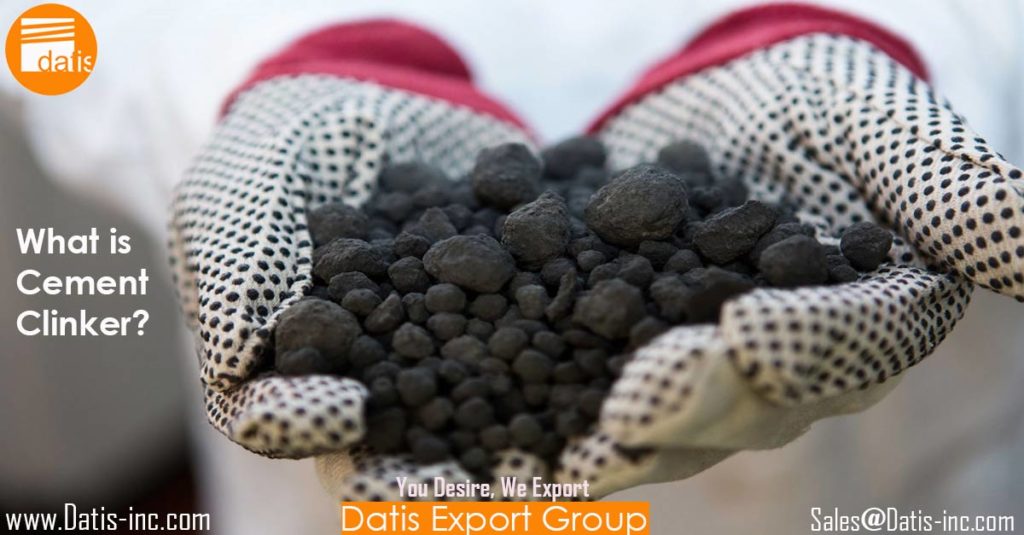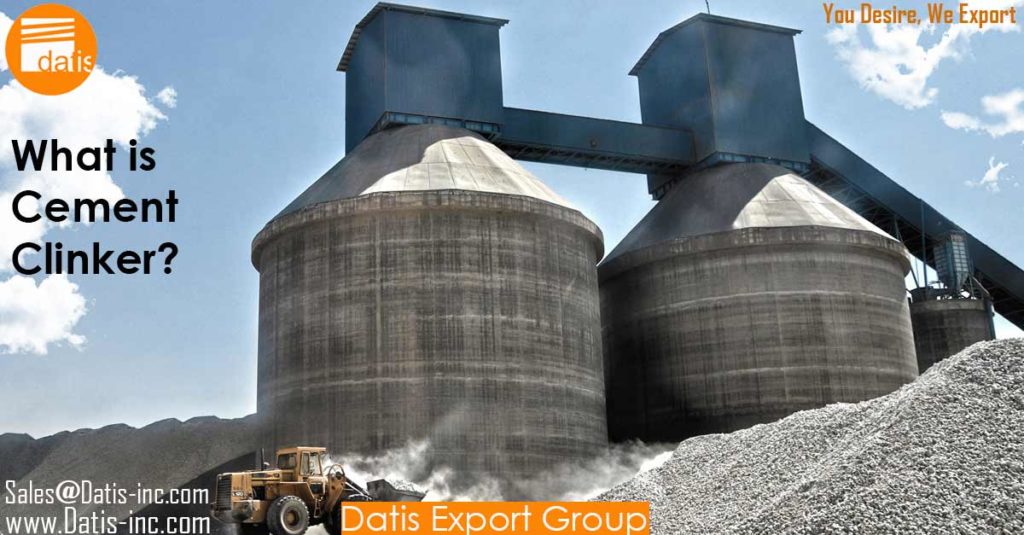What is Cement Clinker
If you wanted to know the answer to What is Cement Clinker? it might this article means convenient to you.
Definition
Clinker is a nodular material produced in the kilning stage during the production of cement and is used as the binder in many cement products. The lumps or nodules of clinker are usually of diameter 3-25 mm and dark grey in color.
It is produced by heating limestone and clay to the point of liquefaction at about 1400°C-1500°C in the rotary kiln. Clinker, when added with gypsum (to control the setting properties of cement and ensure compressive strength) and ground finely, produces cement.
Clinker can be stored for long periods of time in a dry condition without degradation of quality, hence it is traded internationally and used by cement manufacturers when raw materials are found to be scarce or unavailable

Composition and Chemical Analysis
The composition of clinker is examined by two separate approaches:
- mineralogical analysis, using petrographic microscopy and/or x-ray diffraction analysis
- chemical analysis, most accurately by x-ray fluorescence spectrometry
The four main components of clinker are:
- Alite: approximately tricalcium silicate (typically about 65% of the total)
- Belite: approximately dicalcium silicate (typically about 15% of the total)
- Aluminate: very approximately tricalcium aluminate (typically about 7% of the total)
- Ferrite: very approximately tetracalcium aluminoferrite (typically about 8% of the total)
Other substances may be present in small amounts:
- Salt phases – various combinations of sodium, potassium and calcium cations with sulfate and chloride anions, such as:
- Arcanite – K2SO4
- Calcium Langbeinite – K2Ca2(SO4)3
- Aphthitalite – K3Na(SO4)2
- Sylvite – KCl
- Low-temperature phases – various intermediate chemical species that have escaped further thermal processing, such as:
- Spurrite – Ca5(SiO4)2(CO3)
- Ternesite – Ca5(SiO4)2(SO4)
- Ellestadite – Ca10(SiO4)3(SO4)3(OH)2
- Ye’elimite – Ca4(AlO2)6(SO4)
The chemical analysis of clinker is usually given in oxide form, as follows (in oxide weight %):
SiO2 | Al2O3 | Fe2O3 |
21.5 | 5.2 | 2.8 |
CaO | MgO | K2O |
66.6 | 1.0 | 0.6 |
Na2O | SO3 | LOI |
0.2 | 1.0 | 1.5 |
IR | Total |
0.5 | 98.9 |
The amounts of different components vary depending on the desired properties of the produced clinker.Free lime= 1.0% CaO
The balance is made by the addition of alkali sulfates and minor impurities, such as small amounts of oxides of titanium, manganese, phosphorus, and chromium.
Thermochemistry of Clinker
The raw materials entered into the kiln are taken at room temperature. Inside the kiln, the temperature continues to rise and when it reaches its peak, clinker is produced by rapid cooling. Though the reaction stages often overlap, they can be expressed in a sharply-defined sequence as follows:
- 65-125°C: Free water evaporates: latent heat must be supplied. Net heat input: 2145 kJ/kg clinker.
- 400-650°C: Clays decompose endothermically, and alkalis react with the kiln atmosphere to form liquid sulfates. Net heat input: 42.2 kJ/kg clinker.
- 500-650°C: Dolomite decomposes endothermically. Net energy input: 19.7 kJ.
- 650-900°C: Calcium carbonate reacts endothermically with silica to form “incipient belite”. Net heat input: 722.5 kJ
- 700-900°C: Calcium carbonate reacts endothermically with alumina and iron oxide to form incipient aluminate and ferrite. Net heat input: 207.2 kJ.
- 900-1050°C: When all available silica, alumina, and iron oxide have reacted, the remaining calcium carbonate decomposes endothermically to calcium oxide. Heat input requirement: 601.9 kJ/kg clinker.
- 1300-1425°C: Aluminate, ferrite, and part of the belite melt endothermically, and belite react with calcium oxide to form alite.
- 1425-1300°C: Having passed peak temperature, the melt re-freezes exothermically to aluminate, ferrite, and belite.
Cement Clinker Types and Uses
The most common type of clinker is produced for Portland cement and its blends. The types of clinker vary depending on the type of cement for which the clinker is produced. Aside from the Portland cement blends, some special types of cement clinker are listed below:
- Sulfate Resistant Clinker
- Low Heat Clinker
- White Clinker
- Low-alkali Clinker
- Belite Calciumsulfoaluminate Ternesite (BCT)
Sulfate Resistant Clinker
It contains 76% alite, 5% belite, 2% tricalcium aluminate, 16 % tetracalcium aluminoferrite, and 1% free calcium oxide. Its production has decreased in recent years because sulfate resistance can easily be obtained by using granulated blast furnace slag in cement production.
Low Heat Clinker
It contains 29% alite, 54% belite, 2% tricalcium aluminate, and 15 % tetracalcium aluminoferrite, with very little free lime. It is no longer produced because cement produced from ordinary clinker and ground granulated blast furnace slag has excellent low heat properties.
White Clinker
It contains 76% alite, 15% belite, 7% tricalcium aluminate, no tetracalcium aluminoferrite, and 2% free lime, but the composition may vary widely. White clinker produces white cement which is used for aesthetic purposes in construction. The majority of white cement goes into factory-made pre-cast concrete applications.
Low-alkali Clinker
Reduction of alkali content in clinker is done by either replacing the raw-mix alumina source with another component (thus obtaining a more expensive material from a more distant source) or installing an “alkali bleed”, which involves removing some of the kiln system’s high-temperature gases (which contain the alkalis as fume), resulting in some heat wastage.
Belite Calciumsulfoaluminate Ternesite (BCT)
This concept is used in producing a type of clinker with up to 30% less carbon dioxide emission. Energy efficiency improves and the electricity costs for the manufacturing process are about 15% lower as well.
Use of Cement Clinker: Conversion to Cement
Cement Clinker, combined with additives and ground into a fine powder, is used as a binder in cement products. Different substances are added to achieve specific properties in the produced cement. Gypsum added to and ground with clinker regulates the setting time and gives the most important property of cement, compressive strength.
It also prevents agglomeration and coating of the powder at the surface of balls and mill wall. Some organic substances, such as Triethanolamine (used at 0.1 wt.%), are added as grinding aids to avoid powder agglomeration. Other additives sometimes used are ethylene glycol, oleic acid, and dodecyl-benzene sulphonate.
The most notable type of cement produced is Portland cement, but certain active ingredients of chemical admixtures may be added to clinker to produce other types of cement, such as:
- ground granulated blast furnace slag cement
- pozzolana cement
- silica fume cement
Clinker is primarily used to produce cement. Since it can be stored in dry condition for several months without noticeable deterioration, it is traded internationally in large amounts. Cement manufacturers buy clinker for their cement plants in areas where raw materials for cement are scarce or unavailable.
How Cement Clinker is made?
The most common way to manufacture portland cement is through a dry method. The first step is to quarry the principal raw materials, mainly limestone, clay, and other materials.
After quarrying the rock is crushed. This involves several stages. The first crushing reduces the rock to a maximum size of about 6 inches. The rock then goes to secondary crushers or hammer mills for reduction to about 3 inches or smaller.
The crushed rock is combined with other ingredients such as iron ore or fly ash and ground, mixed, and fed to a cement kiln.
The cement kiln heats all the ingredients to about 2,700 degrees Fahrenheit in huge cylindrical steel rotary kilns lined with special firebrick. Kilns are frequently as much as 12 feet in diameter—large enough to accommodate an automobile and longer in many instances than the height of a 40-story building. The large kilns are mounted with the axis inclined slightly from the horizontal.
The finely ground raw material or the slurry is fed into the higher end. At the lower end is a roaring blast of flame, produced by precisely controlled burning of powdered coal, oil, alternative fuels, or gas under forced draft.
As the material moves through the kiln, certain elements are driven off in the form of gases. The remaining elements unite to form a new substance called clinker.
what is different between Cement Clinker and Grey Cement?
Cement and clinker are not the same material. Cement is a binding material used in construction whereas clinker is primarily used to produce cement. The main differences between clinker and cement are given below.
| Cement Clinker | Portland Cement |
1 | Clinker is a nodular material which is used as the binder in cement products. | Cement is a binding agent that sets and hardens to adhere to building units such as stones, bricks, tiles etc. |
2 | Clinker is a granular substance containing spherical pellets of diameter 3-25 mm. | Cement is such a fine powdery substance that each pound of cement contains 150 billion grains. |
3 | Clinker is produced inside the kiln during the cement manufacturing process. Raw mix is heated and then rapidly cooled to produce the marble-sized pellets of clinker. | Cement is produced by grinding clinker (added with different active ingredients to achieve the desired properties of cement) into a fine powder. |
4 | The composition of a typical good quality clinker for general use: 37-72% of 3CaO.SiO2; 6-47% 2CaO.SiO2; 2-20% 2CaO.Al2O3; 2-19% 4CaO. Al2O3.Fe2O3 | Composition of the most common type of cement: 85% clinker, 1.5-3.5% gypsum by SO3 content, and up to 15% admixtures. |
5 | The primary use of cement clinker is to manufacture cement. | Cement is used in construction to make concrete as well as mortar and to secure the infrastructure by binding the building blocks. It is also used for water-proofing, filling or sealing gaps, and making decorative patterns. |
We hope this article could be useful to answer your question What is Cement Clinker?
Datis Export Group is a No.1 supplier and Exporter Portland Cement Clinker in the region. If you are looking for any types of Cement Clinker, pleased send us your Letter on Intent-LOI to our sales team. We will revert to you by SCO shortly.

